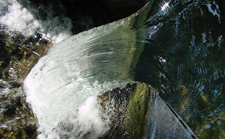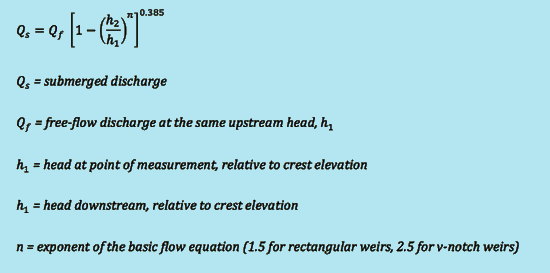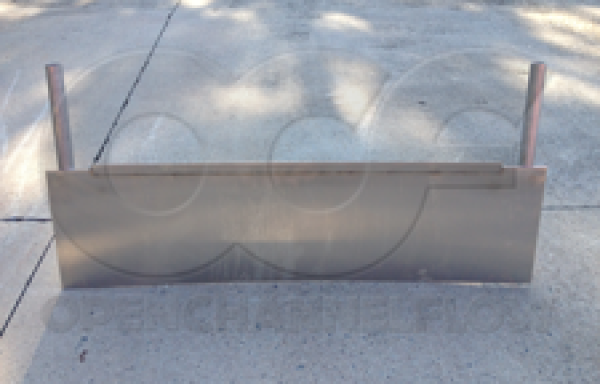This website uses a variety of cookies, which you consent to if you continue to use this site. You can read our Privacy Policy for
details about how these cookies are used, and to grant or withdraw your consent for certain types of cookies.
Correcting for Submergence in Thin-Plate Weirs
 To accurate measure flow, thin-plate weirs are intended to operate under free-flow conditions with the nappe freely spilling over the weir’s crest.
To accurate measure flow, thin-plate weirs are intended to operate under free-flow conditions with the nappe freely spilling over the weir’s crest.
However, there may be occasions when a weir becomes submerged – either through changes or mismanagement of the downstream conditions or settling of the weir. Just like a flume, when weir becomes submerged the discharge at the point of measurement overstates the actual discharge over the weir.
This does not mean that no calculation of the flow rate can be made. Villemonte provides the equation below to correct for submerged conditions:

Villemonte recommended that h2 be measured just beyond the turbulence caused by the nappe entering the downstream water's surface, generally 6 to 10-feet [1.83 – 3.05 m] downstream of the weir.
Submerged flow corrections for thin-plate weirs should only be viewed as only a temporary measure to provide an estimate of flow. In the long run, steps should be taken to correct the submergence condition.
These can include:
- Cleaning of weeds, sediment, and debris form the downstream channel
- Raising the weir crest
- Installing a different primary device
Image: The Devon Karst Research Society
Sources: Villemonte, J., Submerged Weir Discharge Studies, Engineering News Record, December 25th, 1947, Ackers, P., White, W., Perkins, A., Harrison, A., Weirs and Flumes for Flow Measurement, 1978
Related Blog Posts
Explore more insights in our blog.

LOCATIONS IN ATLANTA, GA & BOISE, ID




